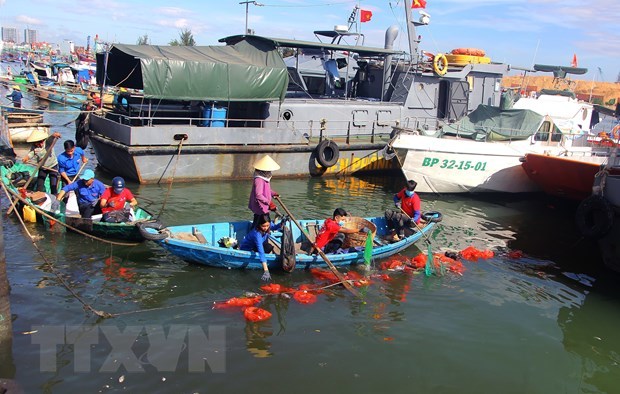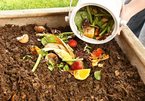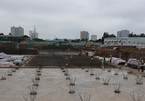A report showed that plastic waste accounts for 6 percent of urban solid waste in Hue City and 8 percent in Hanoi. The figure is 16 percent in HCM City.

Regarding ocean plastic waste, Ha Long City collects 7 tons of solid waste and brings it onshore for treatment. After three waste collection campaigns implemented in 2016-2019, four tons of waste, mostly plastic waste and plastic bags, were collected in 4 kilometer section of Ha Long Bay.
In Cat Ba, more than 50 percent of styrofoam aquaculture buoys were found in bad conditions, torn and floating around aquaculture areas; 4.1 percent of plastic waste from restaurants and 7.9 percent of plastic waste, unrecyclable, from hotels.
| Ha Long City collects 7 tons of solid waste and brings it onshore for treatment. After three waste collection campaigns implemented in 2016-2019, four tons of waste, mostly plastic waste and plastic bags, were collected in 4 kilometer section of Ha Long Bay. |
In Cat Hai district, 10 cubic meters of waste were found floating in the bay, 70 percent of which was plastic.
In Da Nang City, 8-10 percent of solid waste collected in 2019 was from plastic bags and bottles. The waste from the service industry in the coastal areas was discharged directly to sand banks and had drifted to the sea durung high tides.
A group of scientists from Hanoi University of Natural University, who conducted a study on plastic waste, recommended four solutions to recycle plastic waste – primary, secondary, third-level and fourth-level.
Primary recycling is the mechanical treatment of plastic pieces with clear history to form products with the same characteristics.
Secondary is the mechanical treatment of used plastics to create products with lower quality than the original products.
Third-level recycling recovers the components of plastics and additives.
Meanwhile, fourth-level recycling means taking back energy from plastic waste.
Primary recycling is a simple process, but it can be applied only to certain types of plastics that are clean and not contaminated with chemicals. Making new plastic bottles from old bottles is an example.
Secondary recycling relates to the process of collecting, classifying, cleaning, drying, cutting into pieces, and other processing phases, to create finished products.
Third-level recycling, or chemical recycling, is very useful because it is the material circulation process. It helps reduce energy and materials needed for plastics production. However, it is not common because of costs.
The fourth-level recycling is the most effective measure to reduce plastic waste volume. However, the process emits toxic gases and ash.
The primary, secondary and fourth-level recycling measures have been implemented in Vietnam. However, a high level of investment is neededs for tools to control secondary pollution and for legal, economic and communication tasks.
The scientists said Vietnam should encourage the reuse and creation of alternative materials with biological origin and biodegradable capacity.
Thien Nhien

Students use waste microorganisms to turn garbage into profit
A group of students from the Biotechnology – Microbiology Faculty of Can Tho University has joined forces to implement a project on building a modern organic waste treatment process.

Hanoi leader urges completion of wastewater project
Chairman of Hanoi People’s Committee Nguyen Duc Chung has said he will no longer tolerate any delays to the construction of a wastewater treatment facility that is expected to address long-standing water pollution in the increasingly crowded city.
 Treating plastic waste, including ocean plastic waste, is a burning issue for Vietnam.
Treating plastic waste, including ocean plastic waste, is a burning issue for Vietnam.